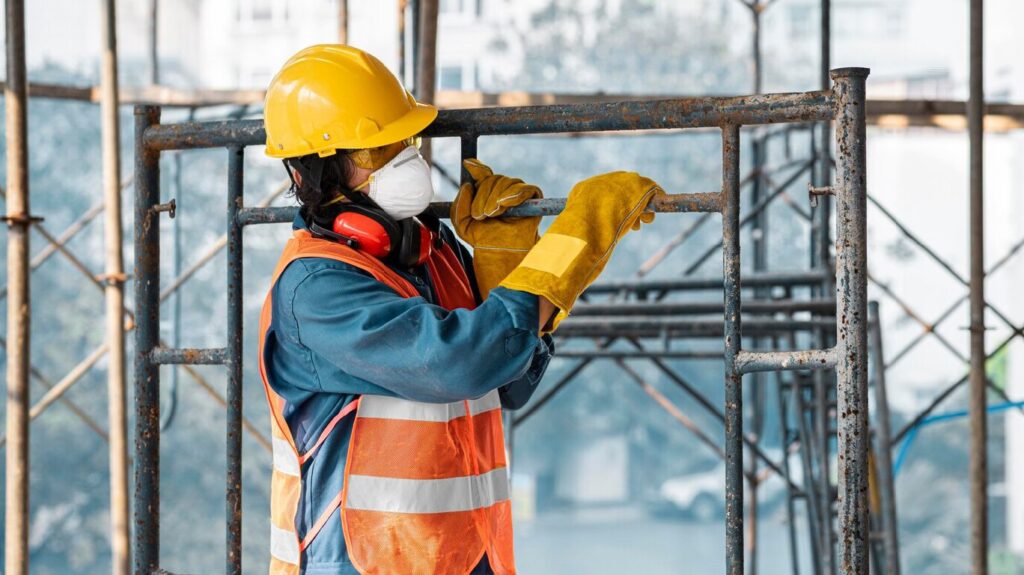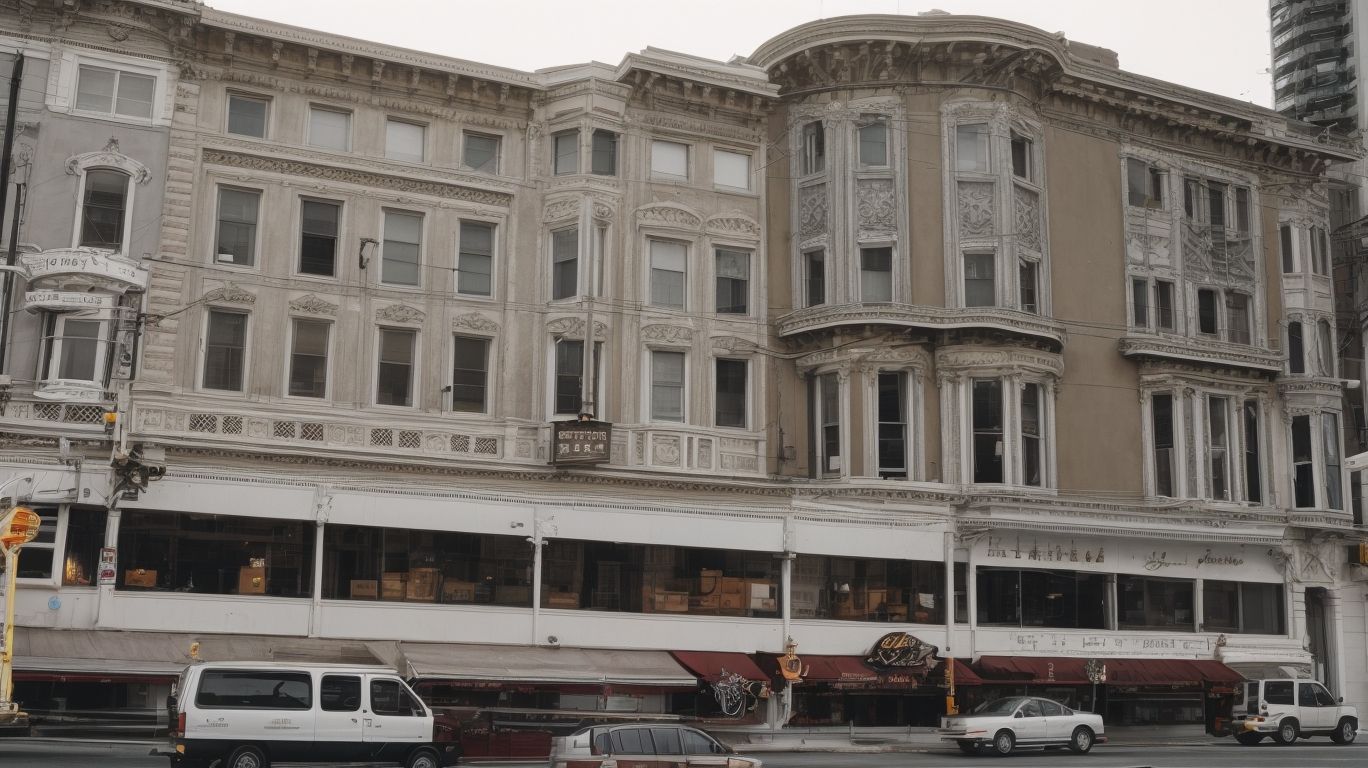
Real-Life Examples of Improved Building Safety
Building safety is a crucial aspect of construction and maintenance, ensuring the protection of occupants and the longevity of structures.
In this article, we will explore the significance of building safety, common issues that arise, and real-life examples of improved safety measures. From fire hazards to structural instability, we will delve into the various challenges and the solutions that have been implemented to enhance safety.
We will discuss future strategies for improving building safety, including stricter enforcement of regulations and the incorporation of safety features in design. Stay tuned to discover how building safety can be effectively improved in the future.
What Is Building Safety?
Building safety encompasses a set of measures and protocols aimed at ensuring the well-being and protection of individuals within built environments.
Building safety involves various measures to ensure the security and well-being of occupants. This includes adhering to fire safety codes, implementing structural integrity checks, and ensuring the proper installation of safety equipment like fire alarms and sprinkler systems.
In addition, regular inspections are necessary to identify and address potential hazards, and personnel must be trained on emergency response procedures. Compliance with building codes and regulations is crucial to mitigate risks and create a secure environment for occupants.
Overall, building safety measures not only protect lives and property but also contribute to the confidence and well-being of those utilizing the space.
Why Is Building Safety Important?
Building safety holds paramount importance in upholding safety standards, ensuring occupational safety, and mitigating potential risks that could compromise the well-being of occupants and visitors.
Buildings must meet strict safety regulations and codes to prevent accidents, fires, or structural failures. Adhering to these standards not only protects individuals within the premises, but also shields property owners from legal liabilities. A safe environment promotes productivity, boosts morale, and reduces absenteeism due to injuries or health issues. Prioritizing building safety is essential for responsible property management and contributes to the well-being of communities and workplaces.
What Are the Common Building Safety Issues?
Common building safety issues include potential fire hazards, structural instability, electrical and plumbing problems, and inadequate safety measures that require diligent risk assessment and safety compliance.
Building owners and managers should regularly conduct risk assessments to identify potential hazards and ensure compliance with regulatory standards. This involves evaluating the building’s infrastructure, identifying vulnerabilities, and implementing corrective measures to mitigate dangers.
Safety compliance not only meets legal requirements, but also prioritizes creating a secure environment for occupants and visitors. Proactively addressing these issues can greatly improve the overall safety and well-being of the building and its occupants.
Fire Hazards
Fire hazards pose a significant threat to building safety, warranting effective fire safety protocols, and robust emergency response capabilities to safeguard occupants and prevent potential disasters.
Building management must prioritize fire safety measures, including regular inspections of fire alarms, sprinkler systems, and emergency exits to ensure optimal functionality. Educating occupants about fire evacuation procedures and conducting regular drills can prepare them for emergencies. Implementing fire-resistant building materials, compartmentalization, and adequate ventilation also reduce the risk of fire spreading. These measures significantly mitigate the overall risk of fire hazards, creating a safer environment for all inhabitants.
Structural Instability
Structural instability represents a critical building safety issue, necessitating thorough assessments of structural integrity and regular building inspections to identify and rectify potential vulnerabilities.
Such instability can lead to catastrophic consequences, posing risks to the occupants and the surrounding area.
The process of assessing structural integrity involves evaluating the materials, design, and construction methods to ensure that the building can withstand various loads and environmental conditions.
Regular building inspections play a crucial role in detecting any signs of deterioration or damage, which, if left unattended, can compromise the overall safety of the structure.
Maintenance practices, such as repair of cracks, reinforcement of weakened areas, and upgrading outdated components, are essential to ensure the continued durability and stability of buildings.
Electrical and Plumbing Problems
Electrical and plumbing problems can compromise building safety, underscoring the need for adherence to building codes and diligent maintenance practices to mitigate potential hazards and ensure occupant well-being.
Proper installation and regular upkeep of electrical and plumbing systems are crucial for preserving a building’s structural integrity. Building codes provide guidelines for designing and implementing these systems, including wiring, circuitry, and pipe installation.
Compliance with these codes not only enhances safety but also plays a pivotal role in legal liability. Regular inspections and maintenance procedures are imperative to identify and rectify potential issues, safeguarding occupants from fire, flooding, and other dangers associated with faulty components.
Lack of Adequate Safety Measures
The absence of adequate safety measures is a critical building safety issue, necessitating targeted safety upgrades and the implementation of comprehensive safety policies to mitigate potential risks and enhance overall safety standards.
This highlights the urgency for building owners and managers to prioritize the formulation and implementation of robust safety protocols.
The integration of modern safety technology, routine safety assessments, and staff training are imperative for creating a secure environment. Investing in advanced safety infrastructure, such as fire suppression systems and emergency evacuation plans, is essential to proactively address potential hazards.
Fostering a safety-conscious culture within the building community is crucial for sustaining long-term safety improvements.
What Are Some Real-Life Examples of Improved Building Safety?
Real-life examples of improved building safety include the successful implementation of fire safety regulations in high-rise buildings, retrofitting of older buildings to meet safety standards, the adoption of safety protocols in construction sites, and the utilization of advanced technology for building inspections and maintenance.
In New York City, after the tragic events of 9/11, strict fire safety regulations were introduced for high-rise buildings. These regulations focused on enhanced evacuation procedures and the use of fire-resistant materials.
The Empire State Building underwent a comprehensive retrofitting program to upgrade its outdated fire suppression systems and improve overall safety.
The construction industry in Singapore has seen a significant reduction in accidents following the adoption of stringent safety protocols. These protocols include mandatory safety briefings and regular equipment inspections.
The integration of drones for aerial building inspections has revolutionized maintenance procedures. This technology ensures early detection of potential safety hazards and structural issues.
Implementation of Fire Safety Regulations in High-Rise Buildings
The implementation of stringent fire safety regulations in high-rise buildings has significantly enhanced building safety, emphasizing the use of fire-resistant building materials and advanced fire suppression systems to mitigate fire risks and protect occupants.
In response to safety regulations, fire-resistant building materials such as fire-rated glass, steel, and concrete have been incorporated. These materials can effectively delay the spread of fire and minimize potential damage.
Additionally, advanced fire suppression systems, such as automatic sprinklers and smoke control systems, are being installed to further reduce the risk of fire-related incidents. These measures not only enhance the safety of high-rise buildings but also provide occupants with valuable time to evacuate in case of a fire emergency.
Retrofitting of Older Buildings to Meet Safety Standards
The retrofitting of older buildings to meet modern safety standards has yielded significant improvements in building safety, involving thorough risk assessments, structural reinforcements, and the integration of updated safety features to mitigate potential hazards.
This process encompasses a detailed evaluation of potential risks, such as structural weaknesses, fire hazards, and outdated safety systems. After identifying these risks, structural reinforcements are employed, which may include adding earthquake-resistant materials, strengthening foundations, or installing fire-resistant barriers.
Integrating updated safety features, such as advanced fire suppression systems, improved ventilation, and modernized emergency exits, further enhances the building’s safety. By undergoing these comprehensive measures, older buildings can be effectively modernized to meet contemporary safety standards.
Implementation of Safety Protocols in Construction Sites
The implementation of robust safety protocols in construction sites has significantly enhanced building safety. This includes comprehensive safety training programs, site-specific hazard assessments, and the enforcement of safety compliance to ensure the well-being of workers and the public.
Prioritizing safety training programs is crucial for construction workers. These programs equip them with the necessary knowledge and skills to identify potential hazards and mitigate risks, fostering a culture of safety awareness.
Construction companies can further enhance safety by conducting site-specific hazard assessments. This allows them to identify and address potential dangers, preventing accidents and injuries.
Enforcing safety compliance not only upholds regulatory standards, but also promotes a sense of responsibility. This creates a safer working environment for everyone involved in the construction process.
Use of Advanced Technology for Building Inspections and Maintenance
The utilization of advanced technology for building inspections and maintenance has revolutionized building safety practices, facilitating comprehensive assessments, predictive maintenance capabilities, and streamlined safety compliance efforts to uphold stringent safety standards.
Technological advancements have greatly improved the effectiveness and precision of building inspections. Through the use of drones and high-resolution cameras, inspectors can access difficult-to-reach areas and capture detailed images for thorough analysis.
The integration of data analytics and machine learning algorithms also enables predictive maintenance, allowing for the early detection of potential issues and prompt corrective action. This proactive approach not only minimizes disruptions to operations, but also leads to cost savings and prolongs the lifespan of assets.
How Can Building Safety Be Improved in the Future?
Improving building safety in the future necessitates stricter enforcement of safety regulations, the integration of safety features in building design, regular maintenance and inspections, and comprehensive education and training for building owners and occupants.
This multifaceted approach addresses the essential elements required for fostering a culture of safety within the built environment. Stricter enforcement of safety regulations will set a precedent for compliance and accountability.
The integration of safety features in building design should be intrinsic, unobtrusive, and seamlessly incorporated. Regular maintenance and inspections ensure that safety measures remain effective over time. Comprehensive education and training initiatives will empower individuals to recognize and respond to potential hazards, further supporting a proactive approach to building safety.
Stricter Enforcement of Safety Regulations
Stricter enforcement of safety regulations is paramount for improving building safety. This necessitates rigorous compliance monitoring, punitive measures for violations, and the establishment of robust safety policies to uphold safety standards.
This imperative requires a multifaceted approach, encompassing proactive inspections to identify potential hazards, conducting regular safety audits, and implementing training programs to ensure adherence to safety protocols.
It is essential to instill a culture of accountability within the industry, where all stakeholders are actively involved in promoting and maintaining a secure environment. By integrating these strategies, the goal of enhancing building safety can be effectively achieved.
Incorporation of Safety Features in Building Design
The integration of safety features in building design serves as a pivotal means to improve building safety. This involves innovative safety upgrades, compliance with building regulations, and prioritization of occupant well-being in architectural planning and construction.
Building safety is crucial for protecting occupants and mitigating potential risks. This includes features like smoke detectors, fire-resistant materials, emergency exits, and seismic reinforcement. Advanced technologies like smart sensors and automated systems also play a role in enhancing safety by quickly detecting and responding to threats. It’s essential for architects and designers to stay updated on building safety regulations to incorporate the latest measures into their designs and create a safe and secure built environment for all.
Regular Maintenance and Inspections
Regular maintenance and inspections play a crucial role in improving building safety, necessitating proactive maintenance schedules, comprehensive inspection protocols, and the prompt rectification of identified safety concerns to ensure sustained safety standards.
Building owners and facility managers should establish a proactive maintenance schedule that includes regular checks and servicing of critical systems and components. This includes electrical, plumbing, fire safety, and structural elements.
Comprehensive inspection protocols should be implemented to thoroughly assess potential safety risks and hazards. Prompt rectification of identified safety concerns is crucial in preventing accidents and ensuring the long-term safety and functionality of the building. By adhering to these practices, building safety can be significantly enhanced, providing peace of mind for occupants and stakeholders.
Education and Training for Building Owners and Occupants
Comprehensive education and training programs for building owners and occupants are essential for improving building safety. These programs should encompass occupational safety training, emergency response preparedness, and heightened awareness of safety protocols and measures.
Such initiatives not only equip individuals with the necessary skills and knowledge to identify and address potential hazards, but also promote a culture of safety within the building environment. “Safety first” should be the mantra for all building occupants.
By fostering a proactive approach to safety, these programs can significantly reduce the risk of accidents and injuries. Ultimately, prioritizing education and training translates into safer, more secure building environments for everyone involved.




No Comments